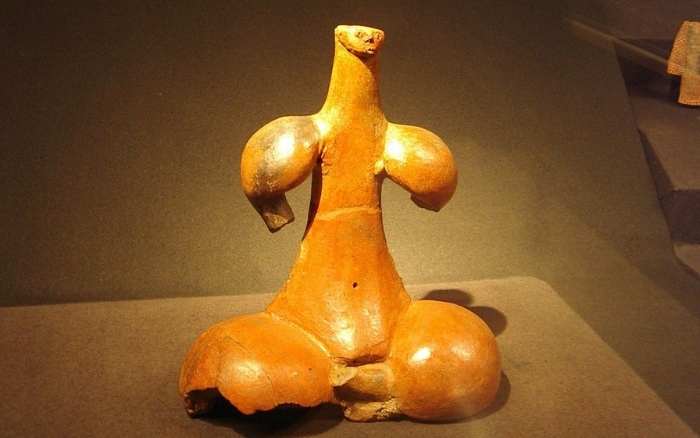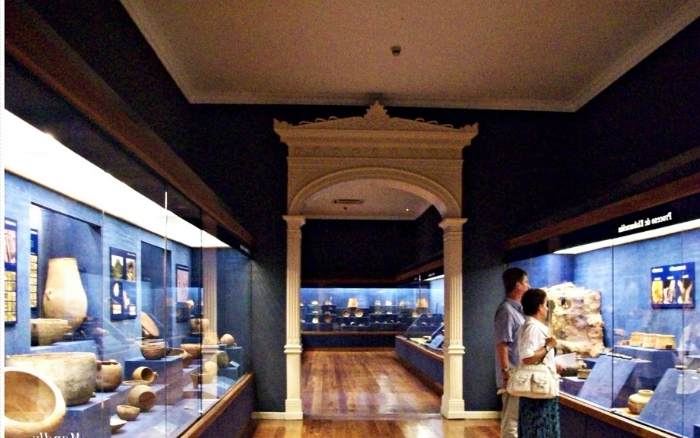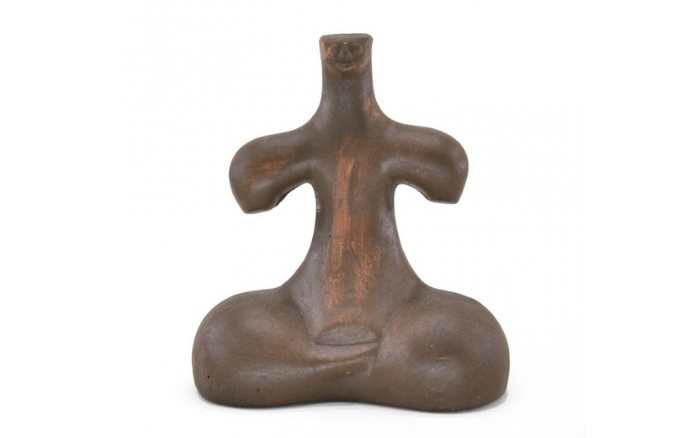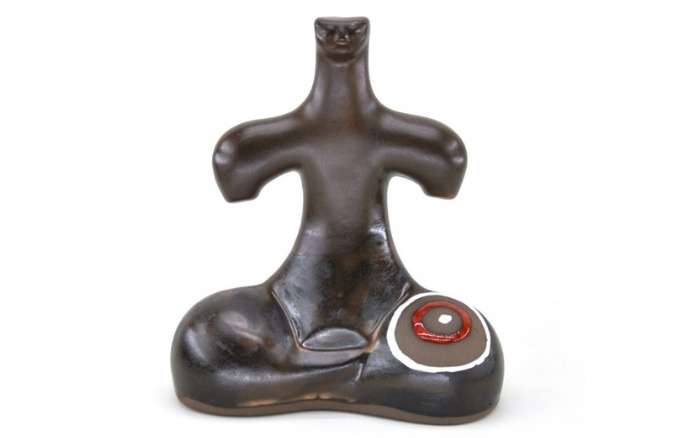Idol of Tara. Curiosities and Origin
Tar a'sidol has been identified as a symbol of paramount importance to all canaries. It is a small ceramic statue 27 cm high and a large part of Canarian society has a strong sense of identity with it. Something very yours.
The idol of Tara is a small ceramic figure, closely related to the fertile culture of the ancient inhabitants of Gran Canaria, and can currently be admired in the Canary Museum of Las Palmas, Gran Canaria.
If we look at it with the eyes of the person who gave it life, it transmits the strength of a hardworking people of great conviction, who resided in ancient Tamaran.

It should be emphasized that among the permanent collection of the museum, there are more than 200 copies of the so-called pintaderas, a kind of stamps made of cooked clay of Guanche culture.
One of the characteristics of this figure is the exaggeration of the thighs and forearms and the meticulous execution of the work, showing a detailed effect of and retaining the paint on most of its surface. Although he is in very good condition, Tara 's idol has lost his arm and his hand is believed to rest on his thigh.
The artist still allows some realistic features to give individuality to his work. The first thing that stands out is the face. Its creator conferred a small hollow head on it and insinhibited facial features through small incisions. Another permission of visual representation is to decorate the navel of the character's abdomen, deliberately trimming the part corresponding to the hip.

Although this idol has established a connection with the town of Teldense in Tara, according to its name, there is no document attesting to the creation of this idol, because in the oldest inventory of the Canary Museum where the work is located, it only pointed out that it had been located in Gran Canaria.
The possible reason for the erroneous origin of the statue of Tarais that the former curator of the Canary Museum assumed that like the other two iconic heads that were marked and found in the important Aboriginal town of Tara, this figure was attributed the same origin, and subsequently transferred this information to the new reference of the work.
However, it is increasingly remarkable that some experts point out that Gáldar may be the source of this important exhibition of Canary indigenous art.
Anthropomorphic Guanche Idol
and is that in female figures with these characteristics they relate to fertility, and they do so by exaggerating their sexual attributes through bulky breasts, buttocks and bellies, while limbs such as hands, arms and head, are small compared to other forms.
But in the case of Tara's idol, it presents an ambiguous and un defined sexuality in its entirety, so such sculptures or figures are considered bisexic. It emphasizes its high degree of outlining and debugging in all its forms.
The idol of Tara is therefore the most recognizable piece of all preserves The Canary Museum,which is in turn a research and dissemination center that carries out archaeological studies on the island, from 1879, to the present day.
In Canarias Shop, you can find personalized reproductions, of this acclaimed Canarian figure, in the form of an artisan souvenir, which you will surely like:

For more information here

For more information here
